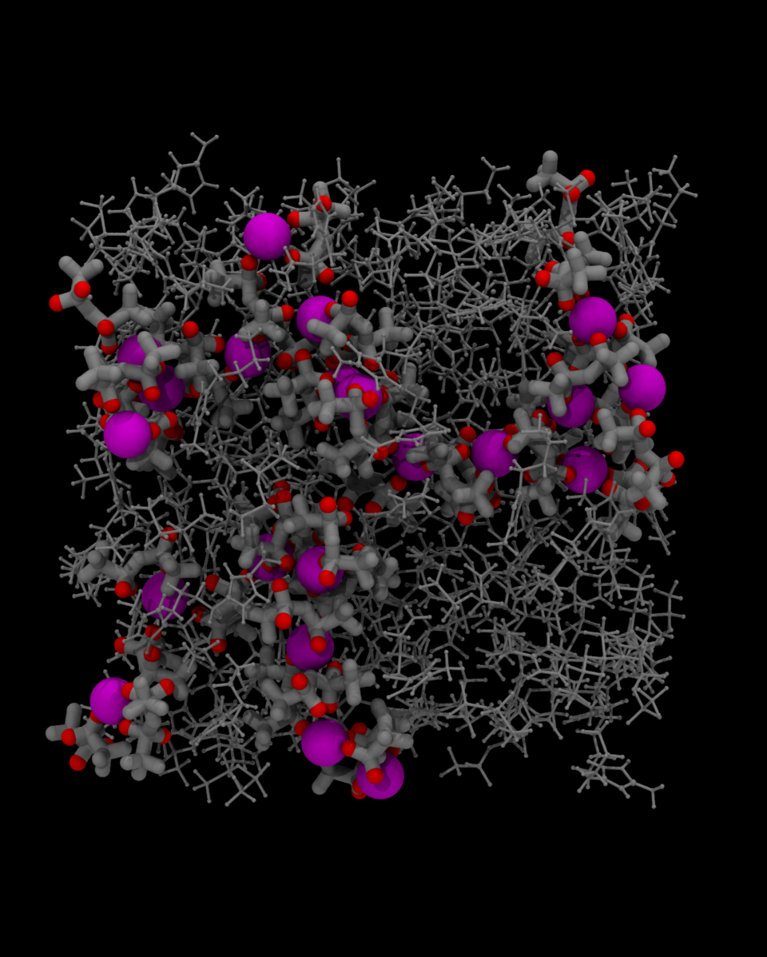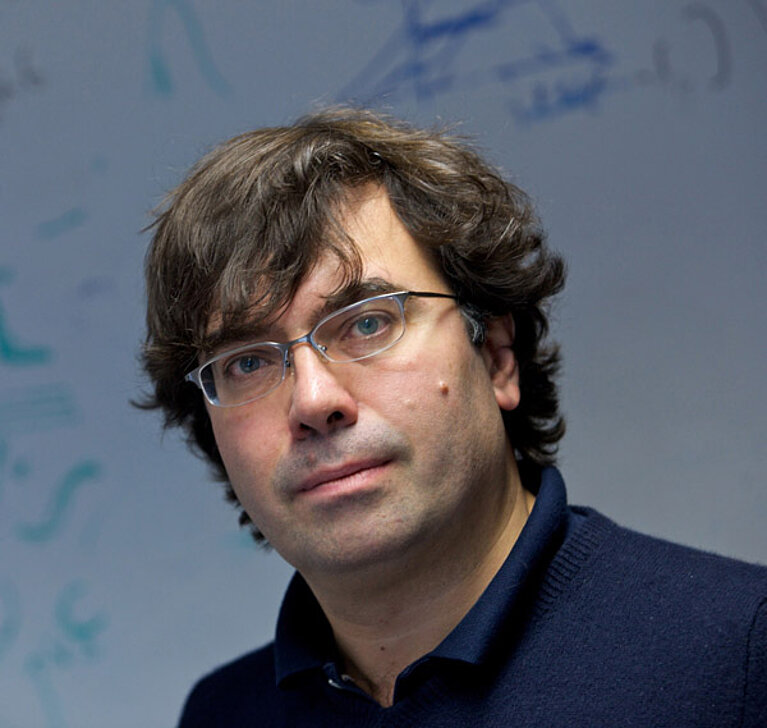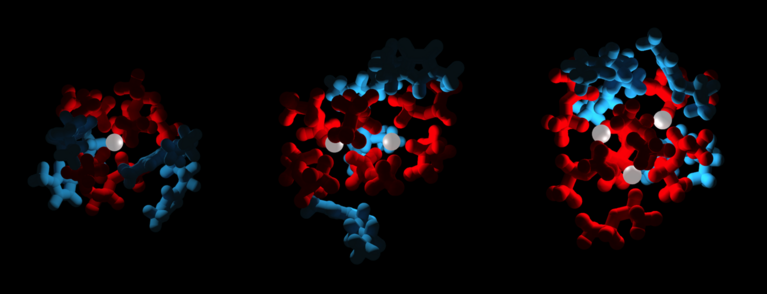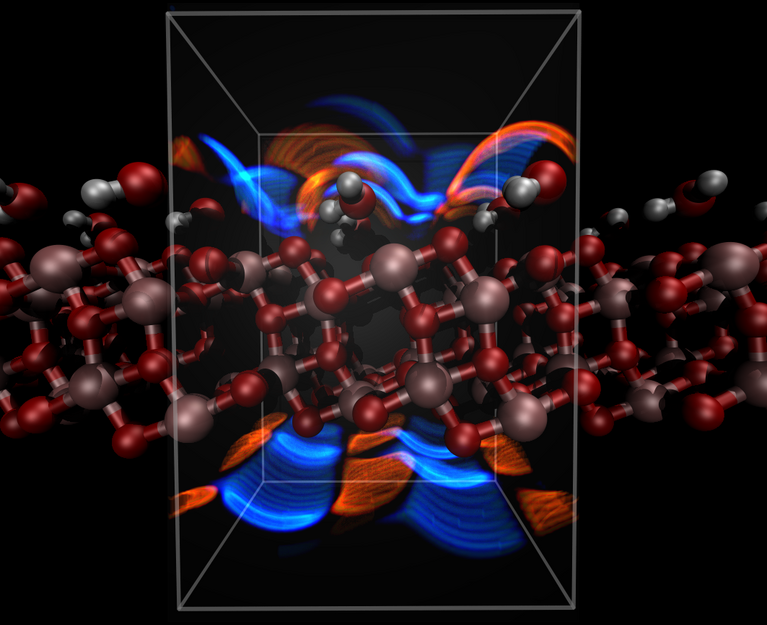July 01, 2014 - by Simone Ulmer
A society’s key achievements can often be traced back to the discovery and development of completely new materials. For example, the iron-based catalyst for ammonia synthesis revolutionised the food production industry by facilitating the production of agriculture fertilisers on an industrial scale. Likewise, engineering the properties of silicon brought about the information-technology revolution, and with it, a radical change in our professional and personal lives, says Nicola Marzari, Chair of Theory and Simulation of Materials at EPF Lausanne. Much of our modern life is underpinned by achievements in materials research – from energy to electronics, from transportation to health care. Novel materials are not only needed to achieve technological progress – for example, to exploit alternative energies – but they also help advance research itself, stresses Marzari: from high-temperature superconductivity and the detectors needed to operate the Large Hadron Collider at CERN, to all the recent excitement in condensed matter physics surrounding two-dimensional materials like graphene or topological insulators.
Concerted research in materials science in Switzerland
Experimental and theoretical research in materials is well established in Switzerland. A five-year National Research Programme “Intelligent Materials” (NRP 62) was launched in 2010, and now, leading research groups from Swiss universities and research facilities – comprising more than 20 investigators – have been granted funding to create a National Centre of Competence in Research (NCCR) geared towards accelerating the design and discovery of novel materials with the aid of supercomputers. “This is especially relevant for materials for which there is an urgent societal demand, such as in the fields of energy and the environment”, says Marzari, who is directing the NCCR, called MARVEL, for “materials revolution”.
Challenges include the development of materials that can harvest solar energy and convert it into fuels, materials that can store electricity to power the grid (or our ever-present portable devices), and lightweight materials that can be used to build more energy-efficient vehicles. Marzari himself is investigating novel materials to convert heat or solar light into electricity, and new, non-flammable materials for lithium-based batteries. His team is also focussed on creating more environmentally friendly materials, such as alternatives for rare-earth elements, which would help reduce the environmental impact of mining.
Computational materials science is well established at Switzerland’s universities and institutes of technology, and this community relies heavily on the computational infrastructure provide by the User Lab of the Swiss National Supercomputing Centre (CSCS). Indeed, more than 60 per cent of CSCS’s supercomputing resources are used by chemists and material scientists. Besides simulating new materials, scientists are also actively developing the cutting-edge algorithms and computer codes that are the core engines for these simulations. In Michele Parrinello, a professor at ETH Zurich and the Università della Svizzera italiana, Switzerland boasts the scientist who made one of the most significant breakthrough in materials science simulation – through his development of the Car-Parrinello Method with Roberto Car (now at the University of Princeton). Jürg Hutter, a professor at the University of Zurich, is the creator and one of the leading scientists working on the CP2K Code, which employs similar methods to exploit the most advanced computational platforms worldwide. There are also core development groups for other key materials simulation programmes such as ABINIT/BigDFT, Quantum-ESPRESSO, and ALPS, based respectively at the University of Basel, EPF Lausanne and ETH Zurich.
Unique advantage
Thanks to the long-established and tight interplay between theory, algorithms and supercomputers, as well as the close proximity between all groups involved, Marzari is convinced that with the CSCS supercomputing infrastructure, Swiss materials researchers have a unique advantage over their international competitors. In addition, close collaboration is planned with the main experimental materials research centres in Switzerland, such as the Paul Scherrer Institute in Villigen and the Swiss Federal Laboratories for Materials Science and Technology (Empa) in Dübendorf.
For Marzari, this proximity and the outstanding support structure in place were the main reasons for returning to Switzerland after fifteen years of research in the United States. In 2011 the White House launched the Materials Genome Initiative and declared materials research to be a research priority, with a view to accelerating discovery with the synergy between computations, big data, and experiments. Marzari points out that much of that research is dependent on computational tools developed in Europe, and often in Switzerland itself.
Actually, the seed for this computational search for new materials was planted in Switzerland at the beginning of the twentieth century, with the birth of quantum mechanics. “It’s a little-known fact that the fundamental equation was written by Erwin Schroedinger, an Austrian physicist, during a Christmas holiday in the mountains of Arosa”, says Marzari. “While in the first decades only very simple problems could be addressed, these days computational scientists can deal with the full complexity of realistic systems.”
Searching for a needle in a haystack
In the search for novel properties, scientists have around 150,000 known inorganic components at their disposal. Unfortunately, you can’t just run all these compounds through the computer and expect the new, versatile material you are looking for to simply drop out. First, it takes a lot of creativity on the part of the researcher – and perhaps a dose of serendipity – but the supercomputer’s calculations can help filter out the most promising ones. At this point, the researchers study the properties of these materials in more detail, and only then can the experimental materials researchers set out to build those materials in the lab.
Even today, however, many “desirable” materials and their properties are still far too complex to be calculated on the supercomputer. With the NCCR project and in combination with the Platform for Advanced Scientific Computing (PASC), the scientists are reviewing the underlying theories and, where possible, will simplify them so that more complex and challenging materials can be simulated. While the calculations of materials “ab initio” – in other words, purely using theory and computation without using any experimental results – are accurate, they are always an approximation of reality. “But we can check our predictions by recalculating them again with a variety of approaches to know if their properties are really the ones we were hoping for”, says Marzari.
The PASC project, initiated by CSCS Director Thomas Schulthess, will lead to the improvement of codes and algorithms needed for this research, and will also contribute to the design of future hardware. It is no coincidence that the materials research project at PASC is coordinated by Marzari, who sees it as an ideal complement to the NCCR. Both projects are ultimately aimed at making research in materials efficient, accurate and shared between all involved. Application specialists embedded in the research facilities will contribute to code development and optimisation through PASC, and transfer this know-how to scientists and students involved in this research.
For Marzari, materials research is on the brink of a revolution. “The computational power we have available today, together with these projects, will enable us to find new solutions much faster than was possible in the past”, he says.
Nicola Marzari
Nicola Marzari obtained a degree in physics at the University of Trieste (1992) and a PhD at the University of Cambridge (1996). After this, he moved to the United States, first as an NSF postdoctoral fellow at Rutgers University and then as a research scientist at the Naval Research Laboratory and at Princeton University. In 2001, he was appointed as an assistant professor of computational materials science at the Massachusetts Institute of Technology (MIT), where he was promoted to associate professor in 2005 and to the Toyota Chair of Materials Engineering in 2009. After ten years at MIT, Marzari joined the University of Oxford as its first Statutory (University) Professor of Materials Modelling and as Director of the Materials Modelling Laboratory. He joined EPFL in 2011, where he heads the laboratory for Theory and Simulation of Materials and now also directs the new NCCR on “Computational Design and Discovery of Novel Materials” (MARVEL).

MARVEL
Members of PASC and other Swiss material researchers have been granted a new NCCR project on “Computational Design and Discovery of Novel Materials” (MARVEL). Situated at the intersection of materials science, physics and chemistry, this project aims to use methods from computer science to explore “big data” from materials simulations in order to find the most promising materials that address “urgent societal needs”, targetting the areas of environment and energy. The NCCR will greatly benefit from the PASC initiative thanks to accurate and predictive quantum-mechanical simulation codes that take full advantage of state-of-the-art architectures in supercomputing, says Nicola Marzari, the Director of MARVEL.


